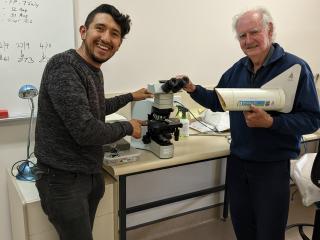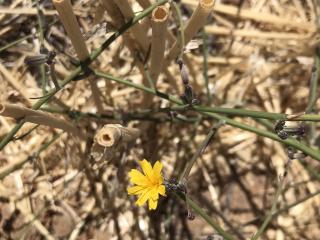The 2022 summer search campaign for one of the State’s most significant plant pests, skeleton weed, is underway across the Grainbelt.
The declared weed – with its striking yellow flower and skeleton-like stems – robs crops of nitrogen and soil moisture, impacting yields and quality.
The Department of Primary Industries and Regional Development’s (DPIRD) summer surveillance program with seven Local Action Groups will cover 180 properties across more than 55,000 hectares.
The use of drones, or unmanned aerial vehicles, will be used to search about 10,000 hectares of the 2022 surveillance area.
DPIRD project manager Martin Atwell said early detection of new skeleton weed areas was very important to the success of the program.
“Surveillance will be undertaken from Geraldton in the north, to Katanning in the south and east to Esperance, while being extended to any areas with new infestations,” Mr Atwell said.
“This surveillance activity will be a critical part of the larger Summer Search Program, which will cover known infested properties and search more than 400,000 hectares across the State.”
The Skeleton Weed Program’s activities are funded by growers through the Grains, Seeds and Hay Industry Funding Scheme.
Initiatives include the Skeleton Weed Management Guide, which has been recently revised with new information about permitted use of key chemicals and updated treatment rates.
Funds are also directed to research investments to help reduce overall skeleton weed infestations, including a new project on pollen monitoring and an ongoing initiative examining biocontrol options.
DPIRD senior research scientist John Moore said the pollen project was trialling the use of spore traps to delimit the distribution and spread of skeleton weed.
“At the moment we don’t know how much pollen skeleton weed produces and how far it travels on the wind,” Mr Moore said.
“This trial will examine whether it is possible to monitor skeleton weed pollen and, if so, whether spore traps could be used to identify the presence of skeleton weed in areas of low infestation to help prove area freedom, as well as detect unknown infestations.”
In 2021-22 three types of skeleton weed were comprehensively mapped across 170 Grainbelt sites, which identified the narrow leaf type predominantly in the north, the broadleaf type in the south and an intermediate type located in between.
The potential for biocontrol agents for broadleaf skeleton weed is now being explored by the Skeleton Weed Program, building on research undertaken in the eastern states.
The program’s work also includes projects on herbicide trials, precision mapping and historical data analysis.
Mr Atwell encouraged landholders and the community to remain vigilant and to report any observations of skeleton weed to DPIRD.
More information on the Skeleton Weed Program, including the Skeleton Weed Management Guide and the annual report is available here.
Any suspect skeleton weed plants should be reported to DPIRD using the MyPestGuide Reporter app or the department’s Pest and Disease Information Service on (08) 9368 3080 or padis@dpird.wa.gov.au.


Media contacts:
Jodie Thomson/Megan Broad, media liaison
+61 (0)8 9368 3937
